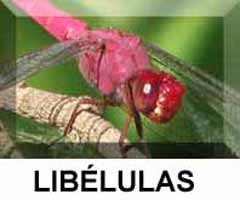





Links to information on Odonates in all of Mexico
=!= =!= =!= =!= =!= =!= =!= =!= =!= =!= =!=
There are both PDF and webpage versions of the
First Guide to the Dragonflies of Jalisco.
Website links are above the PDF links.
Click here to view an
Excel Chart of the species in Jalisco by municipality (similar to a county).
If you find a species in a new municipality, please submit it to iNaturalist.org &/or
Naturalista.mx or personally to Kathy Biggs via email
Presiona aquí para ver una tabla de Excel de las especies de Jalisco por municipio. .
Si encuentra una nueva especie para alguna municipalidad, por favor súbala a iNaturalist
Naturalista.mx o Kathy Biggs
This website is a contribution to the study of Odonata biodiversity in Jalisco, Mexico. This website includes all species seen & photographed by the Biggses and all other records that have been found, including scientific publications and collections, Naturalista, iNaturalist and other sources. All photos by Dave or Kathy Biggs unless marked otherwise.
>View an hour long webinar originally done for the Sonoma Land Trust in 2024 on the Language of the Land: Dragonflies (English) by Kathy Biggs and Sandra von-Arb
Labeled as about in California, but actually about dragonflies in general
Vea un seminario web de una hora de duración realizado originalmente para Sonoma Land Trust en 2024 sobre el Lenguaje de la Tierra: Libélulas de California (español) por Kathy Biggs y Sandra von-Arb
Etiquetado como sobre en California, pero en realidad sobre libélulas en general.
There is a glossary at the bottom of each page.
Click on links (blue text) to go to more information & other images of the species.
|
|
|
|
|
PARA ESTE SITIO PDF EN ESPAÑOL, haga clic aquí
|
=!= =!= =!= =!= =!= =!= =!= =!= =!= =!= =!=